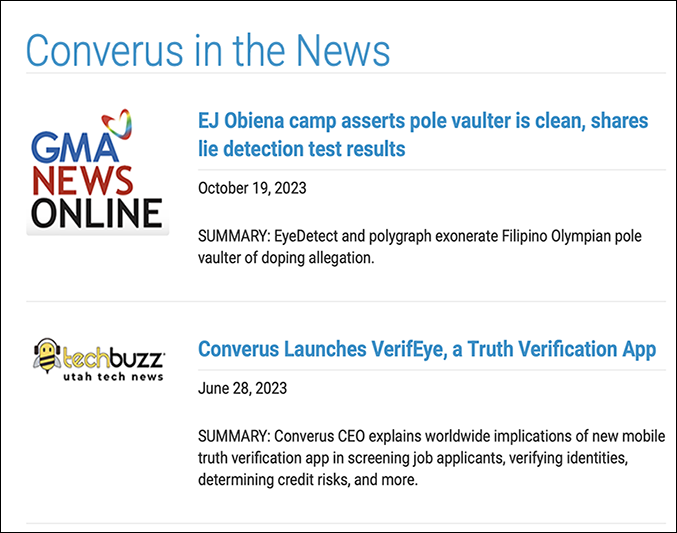
How many of your messages are hitting their target?
As mentioned in this blog post, dull, uninteresting communications get categorized as noise. They’re ignored, forgotten and dismissed without a second thought.
When it comes time to tell your story in a business setting — whether you’re sharing a business idea, launching a product, or promoting a cause — you must do everything possible to make it attention-grabbing.
Attention-Getting & Connecting
Storytelling is the golden ticket. A well-crafted story doesn’t just grab attention; it connects with people’s minds and memories. When your message resonates, people are far more likely to take action — whether that’s making a purchase, joining your cause or sharing your story.
Add some creativity to your storytelling, and you can make your message soar. Early in Jeff’s career when we lived in Ridgecrest, California, he experienced this firsthand when he used a unique, completely outside-the-box twist on a pitch letter to radio talk shows. It led to 10-15 interviews a month for his client (and a full-time job offer in Utah) — all a direct result of coming up with a highly creative, memorable way to convey a message. I’ll ask him to share that story in a future newsletter.
Memories Matter
In “Story Proof” by Kendall Haven, he cites research that proves, “Information is remembered better and longer, and recalled more readily and accurately when it is remembered within the context of a story.”
The word accurately stood out to me. It underscores the importance of clarity in communication. Clear, compelling stories aren’t just recalled — they’re recalled correctly, which strengthens your message.
I also love the word remembered. The more memorable you are, the more success you’ll have.
Researcher Roger Schank says, “The goal is not merely to say the information, but to lodge that information into the mind and memory of the listener and to convince them to believe and use the content information. This is accomplished by linking content information into stories that will trigger memories and index labels in the mind of the listener.” (Tell me a story: A new look at real and artificial memory)
Jean Mandler, a research professor of cognitive science at the University of California, San Diego, took existing evidence to conclude, “Experiences not framed into story suffer loss in memory. Story structure enhances memory and improves our memory of content information.” (Stories, Scripts, and Senses: Aspects of Schema Theory)
Want to be memorable? Use story! Storytelling is essential for memories to form.
10 Memorable PR/Advertising Campaigns
Jeff found these 10 memorable PR/advertising campaigns (yes, you can consider TV advertising part of a PR campaign, especially when you’re looking to change public perception/opinion) that brilliantly used creativity and storytelling to create lasting impressions. I’ve added my personal commentary after some of these:
- Coca-Cola’s “Share a Coke” (2011)
Agency: Ogilvy Australia
Coca-Cola replaced its logo with popular first names on bottles, encouraging consumers to share a personalized Coke. This campaign generated a massive social media buzz and increased sales significantly. People loved seeing their names and sharing pictures online, making it a viral sensation.
Funny thing — back then, my friend sent me a photo of a bottle with my name on it because he was so surprised to find my somewhat uncommon name, in most of the U.S. Must have been in a Spanish-speaking community. - Dove’s “Real Beauty” (2004)
Agency: Ogilvy & Mather
Dove launched this campaign to challenge societal beauty standards, focusing on real, everyday women rather than professional models. This genuine and inclusive message struck a chord globally, redefining beauty for a generation and positioning Dove as a brand that cared about self-esteem and body positivity.
It included one of my all time favorite ads, watching the unreal transformation of an ordinary looking young woman into something she was not. I felt it deeply since there’s ridiculous pressure we women experience due to our society’s emphasis on outward appearance. This conversation actually led to meaningful conversations with our daughters. - ALS Ice Bucket Challenge (2014)
Agency: N/A (Organic social movement)
This viral challenge raised awareness and over $115 million for ALS research. Participants filmed themselves dumping ice water over their heads and nominated others to do the same. It demonstrated the power of user-generated content and viral social media campaigns in driving awareness for a cause.
Oh! That’s what that was, an organic social movement! This campaign’s frozen in my memory, ha-ha. - LEGO’s “Rebuild the World” Campaign (2019)
Agency: BETC Paris
This campaign encouraged creativity and imagination by showcasing the endless possibilities of rebuilding and reshaping the world using LEGO bricks. Through vibrant, imaginative storytelling, LEGO connected with children and adults alike, reinforcing its brand message of creativity and innovation. This campaign helped LEGO tap into a wider audience while emphasizing the power of imagination in both kids and adults. - Red Bull Stratos (2012)
Agency: Internal Red Bull team
Red Bull sponsored Felix Baumgartner’s jump from the stratosphere, combining extreme sports with stunning visuals. The event broke multiple records, was broadcast live, and cemented Red Bull as a brand that pushes boundaries and thrives on adventure. - Apple’s “1984” Super Bowl Ad (1984)
Agency: Chiat/Day
Directed by Ridley Scott, this ad introduced the Macintosh and is considered one of the most famous TV commercials of all time. It depicted Apple as a revolutionary force against conformity (represented by IBM), creating an iconic moment in advertising and tech history.
Wow. It was THAT long ago? We purchased our first Apple computer, a MacPlus, a year after this ad debuted. - Nike’s “Just Do It” (1988)
Agency: Wieden+Kennedy
One of the most enduring and iconic advertising campaigns, “Just Do It” wasn’t just about shoes — it was about empowerment, motivation, and embracing challenges. This tagline has become synonymous with pushing personal limits and has defined Nike’s brand identity for decades. - Old Spice’s “The Man Your Man Could Smell Like” (2010)
Agency: Wieden+Kennedy
This humorous and quirky campaign revitalized Old Spice’s image. Starring Isaiah Mustafa, the ads became viral hits, and the brand saw a massive surge in social media engagement and sales. The campaign’s humor and creativity made it a cultural phenomenon. - Volkswagen’s “Think Small” (1960s)
Agency: Doyle Dane Bernbach (DDB)
At a time when bigger was considered better in America, Volkswagen’s campaign for its Beetle embraced being small. The minimalist design and honest messaging redefined how cars were advertised, making “Think Small” a watershed moment in advertising history. - Budweiser’s “Wassup” (1999)
Agency: DDB Worldwide
This ad introduced the phrase “Wassup” into pop culture, creating an immediate viral sensation. The playful and relatable tone appealed to a wide audience and became one of the most memorable campaigns of the early 2000s, boosting Budweiser’s brand recognition.
The 3 Big Takeaways:
- Uninteresting, poorly constructed, story-less messages are often deemed noise and ignored.
- Stories help people remember information more accurately and for longer.
- Clear, creative storytelling is the key to ensuring your message connects with your audience and leads to action.
Can your communications be more memorable with stories? Let’s chat.

